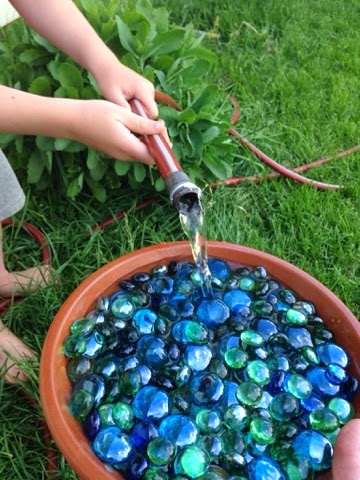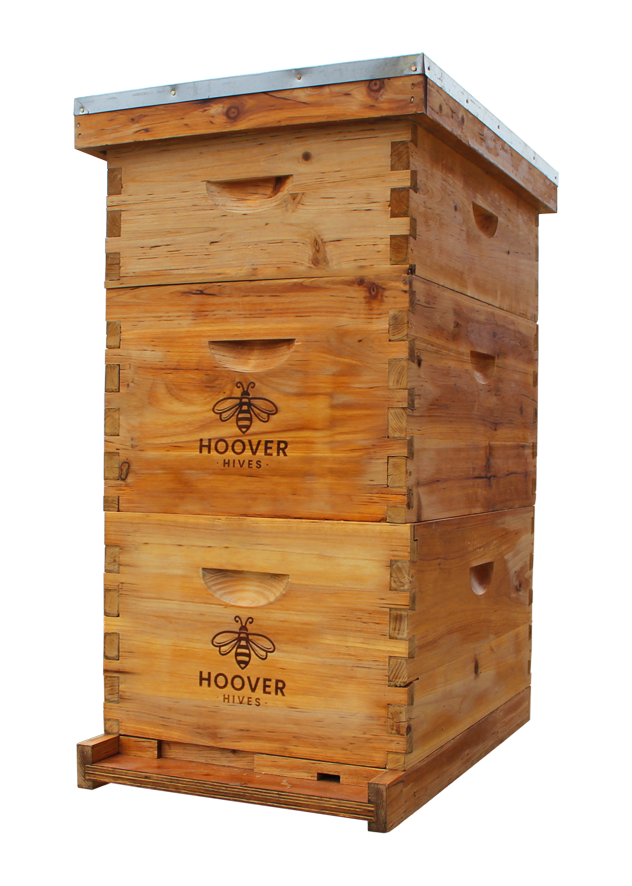Table of contents
Make sure to give your bees lots of sunlight
Create a wind barrier to shield your Bees
Make sure there is a water source nearby
Angle your hive to the southeast
Avoid hills and valleys
Aim for dry ground
Place your beehive on a hive stand
Avoid high foot traffic areas
At least 8″ from your other beehives
Inspecting your hive doesn’t take much space
Make sure to give your bees lots of sunlight
Your bees love sunlight. The amount of sun your bees need depends on where you are in the United States.
Take a look at the map to the right. If you are within USDA zones 1 through 6, your bees would do great in full sun.
If you’re in USDA zones 7-11, your bees need a little bit of shade. You wouldn’t want your bees to get too hot.
If they get too hot, they have to fan out some of the heat. Which takes time away from working on the hive.
Another thing to consider is if they are getting any morning sun. They need the morning sun to get an early start to their day.
Bees won’t start working until the hive heats up. Be sure to place your hive in a location where the bees get plenty of morning sun.
Create a wind barrier to shield your bees
Wind can wipe out even the strongest of colonies.
Consider how much wind the microclimate around your beehives get. Are there natural wind breakers such as a house, a privacy fence, or a tree line?
If not, you may need to create an artificial wind barrier for your bees (especially for the winter). Winter windchills can be brutal on hives.
Gusts are another threat that a wind barrier can relieve. Some gusts can be strong enough to knock over your beehives.
Here’s a Pro Tip!
If you are using a screened bottom board. Switch to using a Solid Bottom Board during the winter.
This will help your bees survive the windchills that may be a threat in your area.
Make sure there is a water source nearby
Yes, your bees drink water! Honey is just a source of energy to get them through the winter. Reason is they use honey in the winter is because honey doesn’t freeze, but water does.
Your beehive can drink up to 1 gallon of water on a hot summer day.
So don’t forget to place your beehive near a source of water.
They will need a shallow area to access the water.
Bees can’t swim! That’s why we suggest placing marbles, rocks, or other items from your garden in the water container you choose.
Please note that bees are super efficient when finding water. They will use the closest water source available
Even if that’s your neighbor’s kiddie pool.
Angle your hive to the southeast

Most experts say you should face your hives to the southeast.
This is for two reasons.
One, so your beehive can face towards the morning sun.
Which should help them start their day quicker.
Two, the prevailing winds across the U.S. are usually from the northwest.
Facing your bees away from the wind will help them the winter windchill.
Consider your micro-climate around your house when placing your beehive. Your winds may usually come from the south or maybe even east.
You’ll want to face it away from the wind.
This is more important than facing the sun. Especially in the winter!
Avoid hills and valleys
You want to try to put your bees on level ground. So stay away from hills and valleys if possible.
Cold air usually settles in valleys. Placing your beehive in a valley may lead to your bees getting too cold to survive.
On the other hand, putting your hive on a hill may cause an upward wind draft into the hive.
An upward wind draft can lead to a frosty hive in the winter. Especially if you’re using a screened bottom board.
Aim for dry ground
Consider if where you place your beehive will stay wet after the rain.
In general, you want the area to dry quickly.
Putting your hive in a marshy area can lead to your hive sinking into the ground. This could make your hive unlevel.
Having a level hive is very important because bees grow their honeycomb straight down using gravity. They may develop comb where you don’t want if the hive is not level.
Place your beehive on a hive stand
Hoover Hives recommends that you put your hives on a homemade hive stand or cinder blocks.
Hive stands are easy to make and are very important.
You’ll need one of these so that skunks and other threats don’t eat your bees.
By raising the hives off the ground, the threat will have to stand on its back legs to reach into your hive. This exposes the animal’s belly.
Once the belly is exposed, the bees can defend themselves against an attack.
Avoid high foot traffic areas
Hoover Hives does not recommend you put a hive directly near your house or near any high foot traffic areas.
If you have no other options though, make sure you give your bees at least 20 feet of space. 20 feet will allow them to reach their preferred flying altitude without interfering with you or your house.
Do not face your hive towards a nearby solid object like a tree/fence.
On top of that, do not face your hive towards an area that receives a lot of foot traffic.
Your bees will be flying around 15 mph on their way to and from their hive. If your bees run into you it can feel like somebody shot you with a Nerf dart.
At Least 8″ away from your other hives
You can put your new hive as close as you’d like to your other hives.
I’ve even hear of people stacking their hives to save space.
One fear beekeepers have when placing their hives near each other is that their bees might rob each other.
Fact is, bees are going to try robbing each other no matter how far away you put them from each other though.
The way to try to fix this is to set your Entrance Reducer to the small opening. Do this at least till they are a strong hive.
The way to fix this is to set your Entrance Reducer to the small section. At least till they are a strong hive.
The big fear that many have when placing their beehives close to others is that their new bees may abscond (abandon the hive).
Here’s a Pro Tip!
You can put a queen excluder between the brood chamber and bottom board.
This will allow your new bees to get used to their new home while preventing the queen from leaving.
Once the queen has started laying eggs, the bees are much less likely to abscond.
The reason we suggest 8″ is because this allows you to have room for your hive tool. You might need to crack open your hive at multiple angles. Especially if your bees make stray burr comb.
Inspecting your hive doesn’t take much space
You don’t need much space to inspect your hive.
Just enough for your hive tool and beefy gloves to get under your Telescoping Top Cover, Inner Cover, and Bee Boxes.
This is the reason we suggest 8″ between hives.
8″ allows you to have room for your hive tool at any angle.
You might need to crack open your hive at multiple angles.
Especially if your bees make stray burr comb.
If you’re worried about space. An 8 frame hive would save you space and are much easier to handle.
You can check out all the benefits of an 8 Frame Hives on our other blog.



